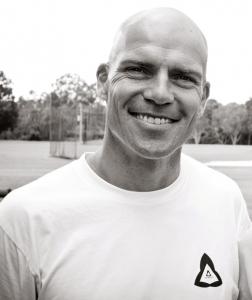- In All Breath Consciousness Healing Health Walk/Run
- Tagged with arms, breathing, consciousness, exhalation, foundations, injuries, nasal breathing, running, walking
Building Lung Strength
In the story, the “Turtle and the Hare”, it was the turtle that reigned supreme. As the story goes, the turtle “won the race” because of the consistency and methodology of the turtles actions.
The same can be said when building lung strength up. If your respiratory strength isn’t where you would like it to be, then something must change. As the old adage states, “things can only change when things change!” And slowing down how quickly you move to give yourself more time to breathe and build upon your lung capacity is one of the most potent techniques there is.
Your relationship with your breath
When it comes to building lung strength up and improving your relationship you have with your breath, the effort required is not so much physical but more mental! God forbid i hear the people say… you’re not suggesting i have to think about how i breathe are you? The answer to that is quite simply, yes and no!
If you’re not inspired to improve your relationship you have with your body and build up your body-connection using your breath, then your answer will be a NO!
But if you wish to improve and create a greater connection with the inherent potency and responsiveness your breath can offer you and your body, then your answer will be YES!
So let’s focus on the YES and build upon lung strength!
Be the turtle!
When it comes to improving your breath most of us think it’s the huffing and puffing in rigorous exercise that does the trick. Yet just like the wolf, huffing and puffing is superfluous when your foundations are strong. You see just like the house you live in requires a solid foundation, so too does the “house you live in – your body” require a solid foundation. And this is where practicing the “turtle mentality” reaps the greatest rewards!
How do we practice the turtle mentality? By simply slowing the down the physical pace you move at and focusing more on the drawing in of your breath (inhalation/IN breath) and the letting go of your breath (exhalation/OUT breath) when you walk.
Starting with the 3-Step
In the TriBreath™ eBook you’ll note the first breathing rhythm you’re introduced to is the 3-Step.
Even though it’s the beginning breath, the 3-Step breathing rhythm is also known for its difficultly in application for many people. Yet the classic thing is the reason for this “difficulty” is not the breathing rhythm itself per se; it’s the habitual pace people are used to using when they walk, run, push, pull, paddle etc..
Slowing down how fast you walk is your first task when first practicing and acclimatising to the drawing in of air and the release of your OUT breath using the 3-Step.
As you can imagine, pulling the air in right down to the bottom of your lungs and then pulling the air up to the very top of your lungs in two steps can be quite daunting if not impossible for many of us in the beginning. This is especially so when your breath is already compromised.
So when we first start practicing and we experience the “cannot” we must never lose sight of the can. And this is where and how the turtle mentality works a treat!
The way to “i can!”
As already stated, the way to get to “can” is to consciously slow down the physical pace of your movement (the pace of a turtle), thus giving you more time to focus on the drawing in (IN breath) and letting go of your breath (OUT breath).
How slow should you slow down your walking pace?
Like real slow!!! Like 2 – 3 seconds for each step you take kind of slow.
If you’re a visual kind of thinker, imagine yourself on the screen walking in slow-mo. The slower the better.
Keep in mind when it comes to your OUT breath on your third step, your OUT breath can be released over as much time as is required to empty your lungs. Just remember the most important aspect is maintaining the timing of your arm and leg movements. Hold your position and don’t take another step until you’ve finished your OUT breath.
You’ll find as your respiratory strength improves, the time it takes to fully exhale your lungful of air will decrease thus tuning the OUT breath up to your IN breath rhythm.
For example…
- As you take one step and one arm moves forward and the opposing elbow moves back, that’s your first IN breath.
- As you take your second step and the other arm moves forward and the opposing elbow moves back, that’s your second IN breath.
- As you take your third step and the arm that first moved forward and the opposing elbow moves back, that’s your OUT breath. Exhale all your breath without taking another step. Then when you’re ready to breathe in again, repeat the process. MOVE SLOWLY and focus on your breath!
On a side note, when you practice walking real slow and maintaining your arm and leg coordination, don’t be surprised if you find keeping your balance difficult. You’ll find the slower you go the harder it’ll be to keep your balance.
Again, as you build your mental connection with your arm and leg movements up, adjust your body accordingly. Familiarising yourself with your body’s movement and your connection as the driver of your body is the reason we’re all here. By practicing this technique you’ll see your mobility will also improve very quickly.
It’s interesting stuff. Get into it! Let me know how you go 🙂

Brett Hayes
TriBreath™ Coach
START LEARNING TRIBREATH™ TODAY
MAXIMISE YOUR POTENTIAL BY JOINING THE TRIBREATH MEMBERS COMMUNITY


